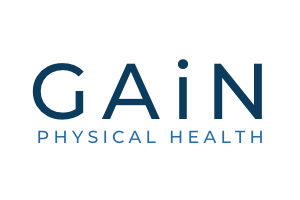I had never really been into running, preferring gym work and team sports, but started running short distances in 2017 as a way to help exercise our very energetic dog (a Hungarian Vizsla). After not too long, I started getting patellofemoral pain (pain around the front of the knee) and I was struggling to increase my milage above 9 miles (14.5 km) per week so I stopped out of frustration, my dog was not happy with me! My knowledge at this point was based more on a biomechanical model, I felt there was something wrong with my biomechanics, causing me to overload my knees. My questioner mindset would not let it go and my clinical curiosity took over so I did some research.
As part of my studies I listened to a really interesting podcast called the “Science of Ultra Episode 58. Tendons And Sinews With Keith Baar, PhD https://podcasts.apple.com/ca/podcast/science-of-ultra/id1042673386?i=1000392516419
Dr Baar highlighted some fascinating research that was a game changer for me which I’ll explain using running as an example.
- When we run, the cells of our cardiovascular system and muscles are continually receiving signals to adapt, the more you run the more of a positive response you’ll get.
- The cells of your bones, cartilage, tendons and ligaments are different. These guys receive signals for up to 10 minutes before they get bored and stop paying attention to the signal. So what does this mean? By the 10 minute mark the cells of your bones, cartilage, tendons, and ligaments have achieved their maximum training benefit. They’ve reached their maximum effective dose. Anything above this is not going to be of benefit to these tissues or make these tissues stronger. Instead they will start to slowly fatigue.
- If you are prone to bone stress injuries such as medial tibial stress syndrome (aka shin splints), tendon problems like Achilles tendinopathy or cartilage problems in the knee, you can use this knowledge to your advantage when training.
- You can maximally train these tissues in less than 10 minutes. This could either be up to 10 minutes of running or up to 10 minutes of jumping rope.
Dr Baar calls these workouts “Connective Tissue Health Sessions”, he suggests that they should be performed 6-8 hours before or after your main workout and at least twice per week, the frequency of these sessions will depend on a whole host of individual factors.
 I wanted to put this to the test in my own body. I hadn’t run in well over a year and the furthest I had ever run was still 9 miles (14.5 km). I’m not sure what I was thinking, perhaps it was a mid life crisis, but I wanted to experiment on myself. Could I use this concept in my training to run a 43 mile (69.2 km) Ultra albeit on pretty flat terrain (it was the South East of England) in 8 weeks, without getting knee pain or an injury? The answer turning out to be yes, I successfully completed that first ultramarathon with no pain.
I wanted to put this to the test in my own body. I hadn’t run in well over a year and the furthest I had ever run was still 9 miles (14.5 km). I’m not sure what I was thinking, perhaps it was a mid life crisis, but I wanted to experiment on myself. Could I use this concept in my training to run a 43 mile (69.2 km) Ultra albeit on pretty flat terrain (it was the South East of England) in 8 weeks, without getting knee pain or an injury? The answer turning out to be yes, I successfully completed that first ultramarathon with no pain.
The main strategy of my training was to do a long run and then rest from running until I could walk down the stairs without knee pain. I’d then perform a shorter run of less than 30 minutes and again wait until I could walk down the stairs without pain, I’d then head out for progressively longer runs.
I added in the 5-10 minute connective tissue health sessions which included skipping, sometimes twice per day depending on how I was feeling and recovering. I also got the hours in on the bike, walked a lot, and strength trained twice per week. My knee pain did reoccur at the start, but by week 3 of my training, using these strategies, I managed to build up my milage without any progression of my symptoms.
Understanding the effect the exercise duration had on my joint and connective tissue health completely changed my ability to run longer distances. This experience undoubtedly contributed to my passion for finding solutions to physical health problems and injuries and led me to run 3 further Ultras and my 5th will be in July at the Sinister 7.
Baar, K., (2017) “Minimizing injury and maximizing return to play: Lessons from engineered ligaments”, Sports Medicine, 47(1), pp.5-11. [Online] Available at: https://link.springer.com/article/10.1007/s40279-017-0719-x
Bearden, S., and Baar., K., (2017) “Tendons And Sinews With Keith Baar, PhD”, Science of Ultra Episode 58. [Podcast]. Available at: https://podcasts.apple.com/ca/podcast/science-of-ultra/id1042673386?i=1000392516419




